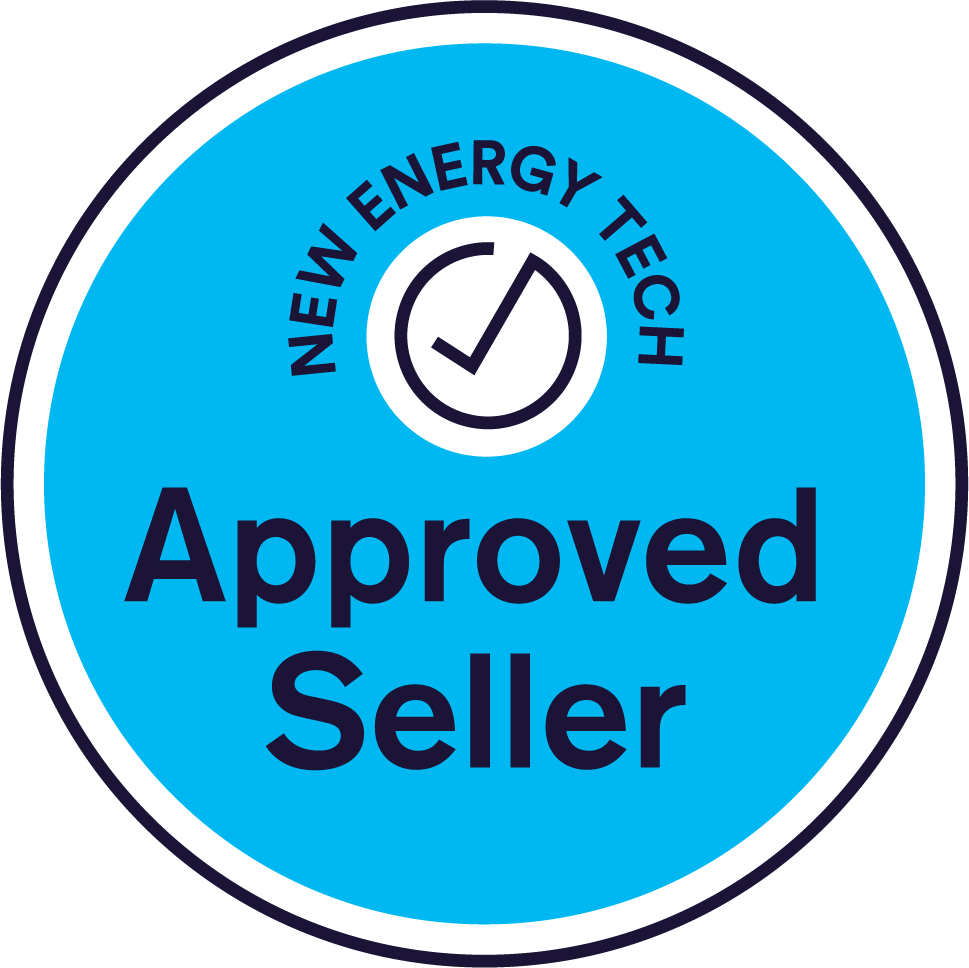Discover the best solar batteries in Australia for 2025! As expert installers, we break down top brands like Tesla, Sungrow, BYD, Hinen, and Neovolt, covering costs, rebates, warranties, and key factors for choosing the perfect battery for your home.
As a leading solar system installer in Australia, we've witnessed firsthand the transformative power of solar energy. In 2025, with electricity prices continuing their upward trend and an increasing focus on energy independence, investing in the best solar batteries Australia has to offer is more critical than ever. This guide will provide you with a detailed, well-researched overview to help you make an informed decision for your home or business.
1. The Growing Importance of Solar Batteries in Australia
Australia's abundant sunshine makes solar power an obvious choice. However, solar panels only generate electricity during the day. Without a battery, any excess energy is sent back to the grid for a diminishing feed-in tariff. Solar batteries allow you to store this surplus energy, enabling you to power your home at night or during peak demand, significantly reducing reliance on grid electricity and protecting against blackouts.
2. Understanding Solar Battery Technology in 2025
The solar battery market is rapidly evolving. In 2025, Lithium-ion batteries, particularly Lithium Iron Phosphate (LiFePO4 or LFP) chemistry, dominate the residential sector due to their superior lifespan, safety, and efficiency compared to older lead-acid options. We're also seeing advancements in modular designs and integrated hybrid inverters.
3. Key Factors for Choosing the Best Solar Batteries Australia
Selecting the right solar battery involves considering several crucial factors:
- Capacity (kWh): How much energy can the battery store? This should align with your household's daily energy consumption patterns.
- Power Output (kW): How much power can the battery deliver at any given moment? This impacts how many appliances it can run simultaneously.
- Depth of Discharge (DoD): The percentage of the battery's total capacity that can be safely used without damaging its lifespan.
- Cycle Life: The number of charge and discharge cycles a battery can undergo before its capacity significantly degrades.
- Warranty: This covers both the duration and the guaranteed usable capacity at the end of the warranty period.
- Efficiency: The round-trip efficiency, indicating how much energy is lost during the charging and discharging process.
- Brand Reputation and Local Support: Choose brands with a proven track record and readily available Australian support.
- Compatibility: Ensure the battery is compatible with your existing or new solar inverter system.
4. Top Solar Battery Brands in Australia for 2025
Based on our extensive experience and industry surveys, here are some of the leading solar battery brands making waves in Australia in 2025:
- Tesla Powerwall: Still a strong contender with its integrated inverter and sleek design, though its market dominance is becoming more competitive. The Powerwall 3 is gaining traction.
- Sungrow: A rapidly rising star, gaining significant market share due to its efficiency, reliability, and modular design.
- BYD (Build Your Dreams): Known for its robust and scalable modular battery systems, often favoured for their compatibility with Fronius inverters.
- Hinen: Offers reliable and cost-effective battery solutions with a focus on ease of installation and user-friendliness.
- Neovolt: Specializes in high-performance batteries designed for demanding applications and longer lifespans.
- Sigenergy SigenStor: A notable newcomer in 2025, offering an impressive all-in-one solution that integrates an inverter, battery, and energy management.
- AlphaESS: A strong player with a range of scalable solutions and excellent Virtual Power Plant (VPP) support.
- Enphase Energy: Offers modular AC-coupled batteries, ideal for expanding existing systems.
5. Tesla Powerwall 3: A Deeper Dive
The Tesla Powerwall 3 builds on the success of its predecessors with an integrated hybrid inverter, simplifying installations. Its high capacity and full-home backup capabilities make it a popular choice for Australian households seeking comprehensive energy independence. While the upfront cost can be higher, its performance and brand confidence remain strong selling points.
6. Sungrow Solar Batteries: Reliability Meets Value
Sungrow has emerged as a serious contender in the Australian market. Their SBR HV series, with its modular LiFePO4 battery cells, offers excellent efficiency and scalability. Sungrow's focus on new energy solutions and a strong emphasis on research and development makes them a reliable and increasingly cost-effective option for many homes.
7. BYD Battery-Box Series: Modular and Flexible
BYD's Battery-Box Premium series (HVS/HVM) provides highly flexible and modular energy storage solutions. Their LiFePO4 chemistry ensures safety and longevity, and their strong compatibility with popular inverter brands like Fronius makes them a go-to choice for new solar installations seeking efficient DC-coupled setups.
8. Hinen Solar Batteries: Reliable and User-Friendly
Hinen batteries are known for their reliability and ease of use, making them a popular choice for homeowners seeking a straightforward and dependable energy storage solution. Their focus on user-friendliness extends to the installation process, which is designed to be as simple as possible. Hinen batteries offer a balance of performance and affordability, making them a strong contender in the Australian market.
9. Neovolt Batteries: High Performance and Long Lifespan
Neovolt specializes in high-performance batteries engineered for demanding applications and extended lifespans. Their batteries are designed to withstand challenging conditions and provide consistent power output over many years. Neovolt's commitment to quality and durability makes them a preferred option for those who prioritize long-term reliability and maximum performance from their solar battery system.
10. Sigenergy SigenStor: The All-in-One Innovator
Sigenergy's SigenStor is a revolutionary product, integrating a solar inverter, battery, and energy management system into a single unit. Its impressive debut in 2025 highlights a growing trend towards streamlined, intelligent energy solutions. The optional bi-directional EV charger further enhances its appeal for forward-thinking homeowners.
11. AlphaESS Smile Series: Smart Energy Management
AlphaESS offers a versatile range of battery solutions through its SMILE series. Known for their excellent VPP support and hybrid-ready designs, AlphaESS batteries are designed to provide smart energy management, allowing homeowners to optimise their energy usage and potentially earn through VPP participation.
12. AC-Coupled vs. DC-Coupled Solar Batteries in 2025
The choice between AC and DC coupled battery systems depends largely on your existing solar setup:
- AC-Coupled Systems: Ideal for retrofitting a battery to an existing solar system with an AC inverter. The solar power is converted to AC by the solar inverter, then back to DC to charge the battery, and finally back to AC for home use. While offering flexibility for existing systems, this multiple conversion can lead to slightly lower efficiency.
- DC-Coupled Systems: More efficient for new installations where the solar panels, battery, and inverter are integrated from the start. DC power from the panels charges the battery directly, with only one conversion to AC for household use. This results in higher overall system efficiency.
Many modern hybrid inverters can operate as both, offering the best of both worlds.
13. Solar Battery Sizing: What's Right for You?
Determining the optimal battery size is crucial for maximizing savings and energy independence. Factors to consider include:
- Daily energy consumption: How much electricity does your household use on average?
- Solar panel output: How much energy does your solar system generate?
- Peak usage times: When do you typically use the most electricity?
- Desired backup autonomy: How long do you want your battery to power your home during a blackout?
As a general guide, many Australian homes find a 10kWh to 13.5kWh battery to be a good starting point, with larger capacities available for higher consumption or off-grid aspirations.
14. Solar Battery Installation Costs in Australia (2025)
As of mid-2025, the installed price of a solar battery in Australia typically ranges from $900 to $2,000 per kilowatt-hour (kWh). This means most home batteries fall between $8,000 and $15,000 installed, with premium brands potentially reaching higher. These costs can vary based on brand, battery chemistry, system complexity, and installation requirements.
15. Understanding Solar Battery Warranties and Lifespan
Solar battery warranties are a critical aspect of your investment. Most reputable brands offer warranties of 10 to 15 years, with a guaranteed capacity retention (e.g., 70-80%) at the end of the warranty period. It's essential to understand:
- Years: The straight duration of the warranty.
- Cycle Life: The guaranteed number of charge/discharge cycles.
- Throughput: The total amount of energy (in MWh) that can be passed through the battery over its warranty period.
The warranty typically expires at whichever limit (years, cycles, or throughput) is reached first. Brands like Zenaji are offering extended 20-year warranties, pushing the boundaries of longevity.
16. Government Rebates and Incentives for Solar Batteries in 2025
Good news for Australian homeowners! Several government initiatives are making solar batteries more affordable than ever:
- Federal "Cheaper Home Batteries Program" (from July 1, 2025): This program will provide a discount of approximately 30% on the upfront cost of small-scale battery systems, based on usable capacity (up to 50 kWh). This is facilitated through Small-scale Technology Certificates (STCs).
- State-Specific Incentives:
- NSW Solar Battery Rebate: Offers between $1,600 and $2,800 depending on battery size and eligibility.
- Solar Victoria: Provides interest-free battery loans of up to $8,800 for eligible homeowners.
- ACT Sustainable Household Scheme and WA Residential Battery Scheme: Offer various incentives to encourage battery adoption.
These rebates can significantly reduce the payback period for your solar battery investment, often bringing it down to 4-8 years.
17. Virtual Power Plants (VPPs) and Their Role
Virtual Power Plants (VPPs) are gaining traction in Australia. By connecting your solar battery to a VPP, you can allow your energy retailer to draw power from your battery during peak demand periods or when the grid needs support, and in return, you receive financial incentives or credits on your electricity bill. This not only benefits you but also contributes to grid stability.
18. Optimising Your Solar Battery Performance
To get the most out of your solar battery:
- Proper Sizing: Ensure your battery capacity matches your energy consumption and solar generation.
- Smart Energy Management: Utilize your battery's monitoring app to track usage and adjust settings.
- Optimal Placement: Install the battery in a well-ventilated area, protected from extreme temperatures and direct sunlight.
- Regular Monitoring: Keep an eye on your battery's performance and address any issues promptly.
- Consider a Battery Management System (BMS): Most modern batteries come with integrated BMS for intelligent operation and protection.
19. Solar Batteries for Off-Grid Living
For those seeking complete energy independence, off-grid solar battery systems are the answer. These systems require careful design and often larger battery capacities to ensure reliable power, even during extended periods of low sunlight. Brands like Redback and specific configurations from AlphaESS and BYD are popular choices for robust off-grid solutions.
20. The Future of Solar Batteries in Australia
The outlook for solar batteries in Australia is incredibly bright. We anticipate:
- Continued Price Decreases: As technology advances and production scales, costs will likely continue to fall.
- Increased Energy Density: Batteries will become more compact while storing more energy.
- Faster Charging and Discharging: Improved battery chemistry will lead to quicker energy transfer.
- Enhanced Smart Features: More sophisticated AI and machine learning will optimise battery performance and grid integration.
- Greater Grid Integration: Batteries will play an increasingly vital role in supporting the Australian energy grid's stability and resilience.
21. Frequently Asked Questions about Best Solar Batteries Australia
Q1: Are solar batteries worth the investment in Australia in 2025?
A: Absolutely. With rising electricity prices, shrinking feed-in tariffs, and significant government rebates, solar batteries are a highly worthwhile investment, offering substantial bill savings, energy independence, and blackout protection. Payback periods are now often within the battery's warranty life.
Q2: How long do solar batteries typically last?
A: Most high-quality solar batteries in 2025 come with warranties of 10 to 15 years, guaranteeing a certain percentage of usable capacity at the end of that period. With proper care, many can last even longer.
Q3: What size solar battery do I need for my home?
A: The ideal size depends on your household's energy consumption. For most Australian homes, a 10kWh to 13.5kWh battery is a good starting point. An expert installer can conduct a detailed assessment to recommend the perfect size for your specific needs.
Q4: Can I add a solar battery to my existing solar panel system?
A: Yes, in many cases, you can. AC-coupled battery systems are specifically designed for retrofitting to existing solar setups. Your installer will assess your current inverter and system to determine compatibility.
Q5: What rebates are available for solar batteries in Australia in 2025?
A: From July 1, 2025, a federal "Cheaper Home Batteries Program" will offer around a 30% discount. Additionally, states like NSW, Victoria, ACT, and WA have their own battery rebate and loan schemes. It's best to consult with a local installer to understand all applicable incentives for your location.
22. Our Commitment to Your Energy Future
As expert solar installers, our mission is to empower Australians with sustainable and cost-effective energy solutions. Choosing the best solar batteries Australia has to offer is a significant step towards achieving true energy independence and resilience. We pride ourselves on offering unbiased advice, high-quality installations, and ongoing support to ensure your solar journey is seamless and rewarding.
Ready to Power Your Home with the Best Solar Batteries Australia Has to Offer?
Don't let rising electricity costs dictate your energy future. Take control with a state-of-the-art solar battery system. Contact us today for a free, no-obligation consultation and tailored quote. Let us help you navigate the options and unlock the full potential of your solar investment in 2025 and beyond!



